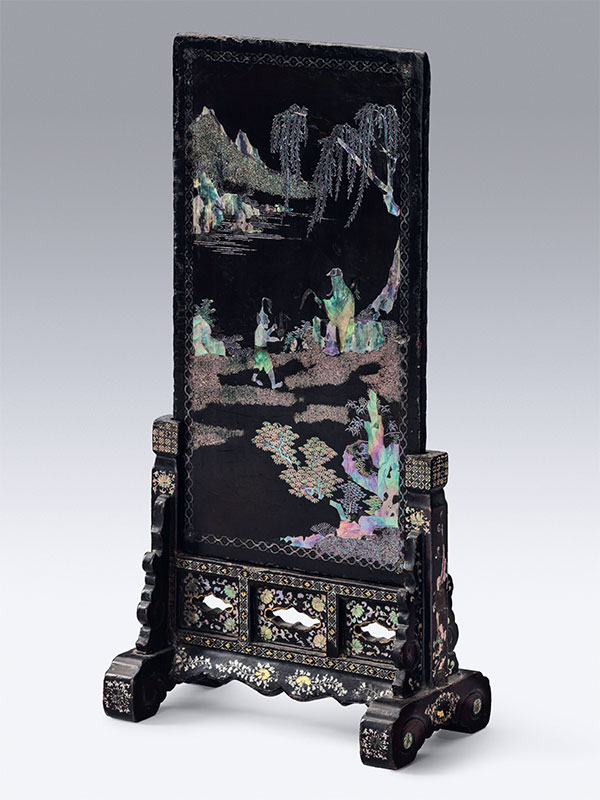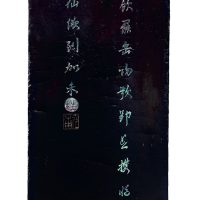Lacquer and mother-of-pearl inlaid table screen
China, late Neolithic period, Liangzhu culture, c. 3000 – 2000 BC
A lacquer and mother-of-pearl inlaid table screen comprising a removeable rectangular panel finely decorated with the Daoist Immortal Lü Dongbin, carrying a sword on his back and holding a flywhisk, seated below a willow tree in a mountainous landscape. His helper, Guo Ma’er, approaches with a wine ewer. The reverse side is inlaid in the same technique with a two-line couplet in cursive script, ending with two seals, zhu and yuanfu. The stand is finely inlaid in mother-of-pearl and gold with intricate geometric borders and floral scrolls.
Although table screens were generally used to shield the inkstone from wind and sunlight, lavishly decorated screens of the present type probably had a decorative function. The scene depicted on the front refers to the Yuan play ‘Yueyang San Zui’ by Ma Zhiyuan (1260-1325). In this story, the Daoist Immortal Lü Dongbin teaches the ways of Dao to the spirit of a willow tree, which then was re-born as a young boy named Guo Ma’er. On this screen, Guo Ma’er is depicted offering a wine ewer to the Immortal. Lü Dongbin is recognisable by his sword and flywhisk, whereas Guo Ma’er typically has a willow branch sprouting from his head.[1] This motif, which was probably circulating through woodblock prints, can also be seen on a blue and white porcelain vase from the Transitional period.[2] A closely related pair of table screens, with different scenes and without stands, were exhibited by the Oriental Ceramic Society of Hong Kong.[3]
Provenance:
Formerly in a private British collection
- Bartholomew, T. T. Hidden Meanings in Chinese Art, San Francisco, 2006, p.196
- Jin, L. The Many Facets of Life: Porcelain in the 17th Century: Blue and White Porcelain with Narrative Scenes, vol. I, Beijing, 2023, pl. 023, pp 94-95
- The Oriental Ceramic Society of Hong Kong, 2000 Years of Chinese Lacquer, Hong Kong, 1993, pl. 94 pp 180-181


